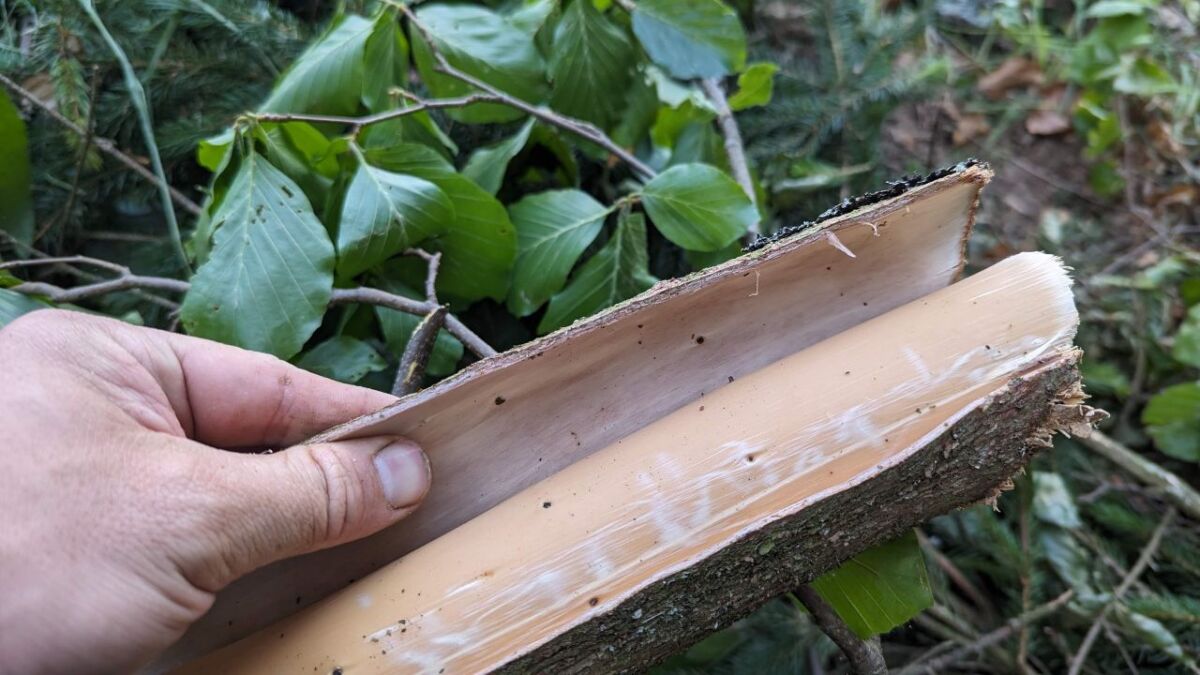
Can you eat tree bark to survive? – How does tree bark taste
👉 The key facts from this guide
- Tree bark is safe and nutritious, containing 80-100 kcal per 100 g and is suitable as food in survival situations.
- The edible cambium is a good source of starch, sugar, vitamins, minerals, and fiber.
- Edible tree bark species include pines, birches, lindens, elms, and willows.
- Avoid poisonous trees such as wild cherry, yew, and eucalyptus trees.
- Harvest the cambium by cutting through the bark and the phloem and collecting the thin, soft layer underneath.
- Possible ways to prepare tree bark are cooking, raw consumption, frying, drying, and making flour or smoking.
Trees can be found almost everywhere.
And every tree has bark.
So, since there is plenty of bark around, I wanted to know if it can be eaten as food.
Read this article to find out if you can survive on tree bark in a survival situation.
Can You Eat Tree Bark?
Most tree bark is safe and nutritious and can be found almost anywhere in the wilderness. Tree bark contains between 80 and 100 calories per 100 g and can serve as food in a survival situation. You just have to be careful not to ingest bark from poisonous trees, such as cherry, yew, or eucalyptus trees.
Okay, so now you know that tree bark is generally edible in a survival situation.
And that's not news. Our ancestors already knew how to use tree bark.
In Finland, Norway, Sweden, North Siberia, the United States, and Canada, tree bark was utilized. The findings indicate that bark powder was used to stretch flour.
The Sami people even mixed bark powder into soups and stews.
Large sheets of bark were taken from trees in the spring, prepared and stored as a staple food resource. Inner bark was eaten fresh, dried or roasted.
From the scientific elaboration of O. Zackrisson, L. Östlund, O. Korhonen & I. Bergman
Now let's take a look at which types of tree bark are edible, how to harvest them, and how to prepare them.
Which Part of Tree Bark Can You Eat?
Take a look, this is how a tree trunk is structured from outside to inside:
- Bark
- Cambium
- Phloem
- Xylem
The outer layer of bark is called the bark. It is hard and protects the tree from external influences. It is made up of cork and dead parts of the phloem.
Under the bark you will find the phloem. The phloem is the living tissue under the bark of trees.
After the bark comes the cambium. The cambium is the tissue layer responsible for the growth in diameter of plants. The cambium produces wood internally and bark externally.
And it is precisely this layer that we want to access: the cambium. The fine and soft tissue layer.
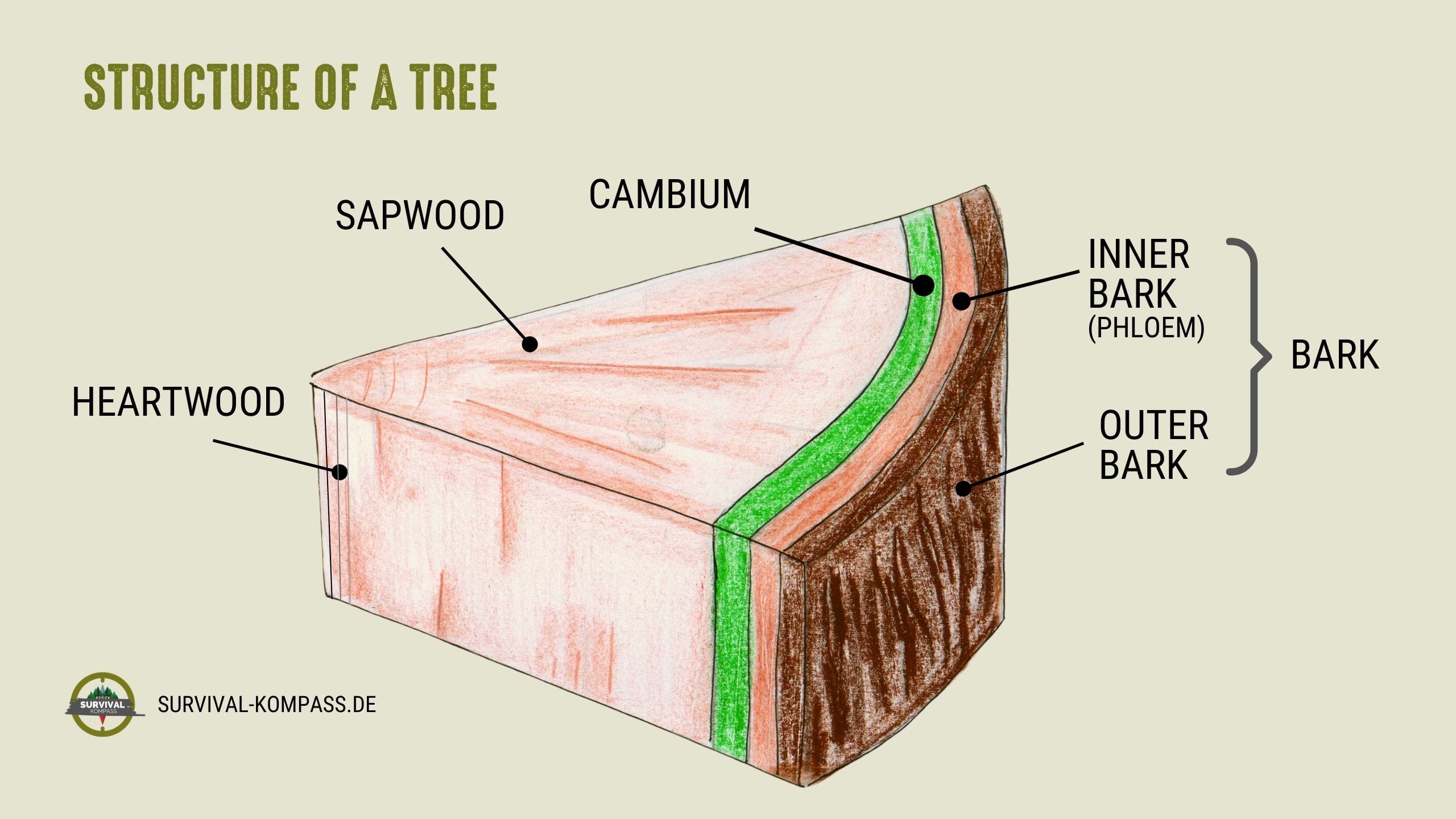
Here you see the cambium on a young maple tree.
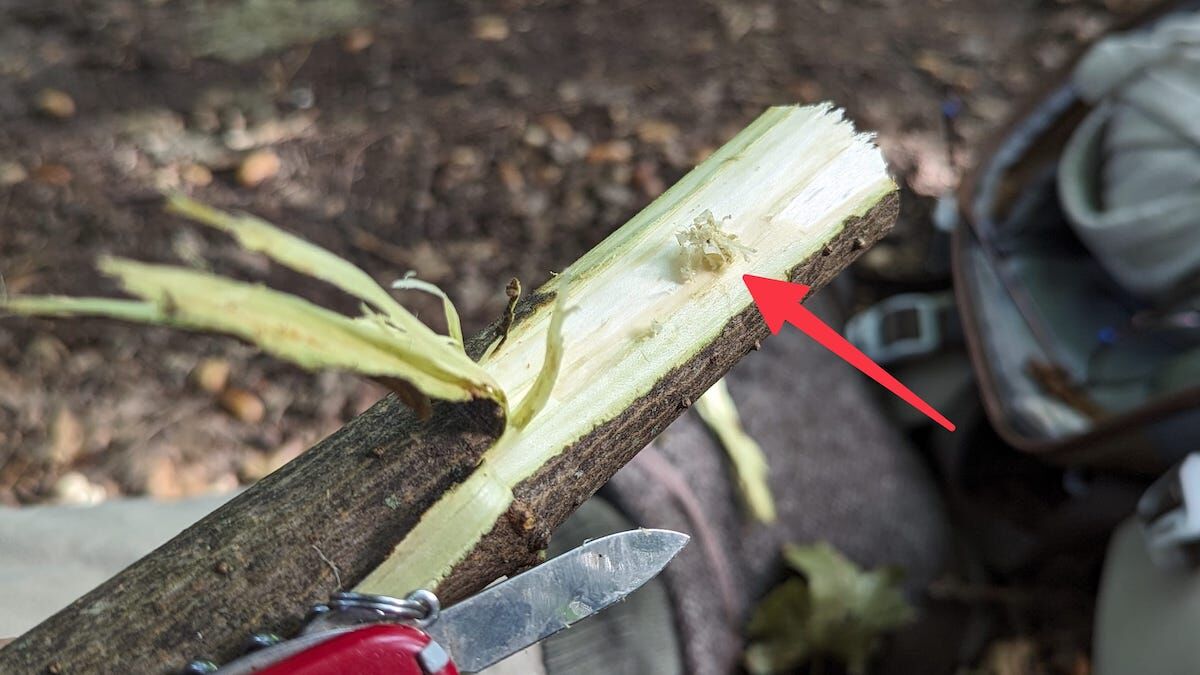
Why should you eat tree bark?
Tree bark provides approximately 80 to 100 kcal per 100g. As an example: pine bark flour contains 82 kcal / 100 g.
That's something, right? With this knowledge, you now know that trees are an abundant and quick source of calories, in addition to wild herbs and plants.
By eating only the cambium, you have access to the best source of starch, sugar, vitamins, minerals, and fiber.
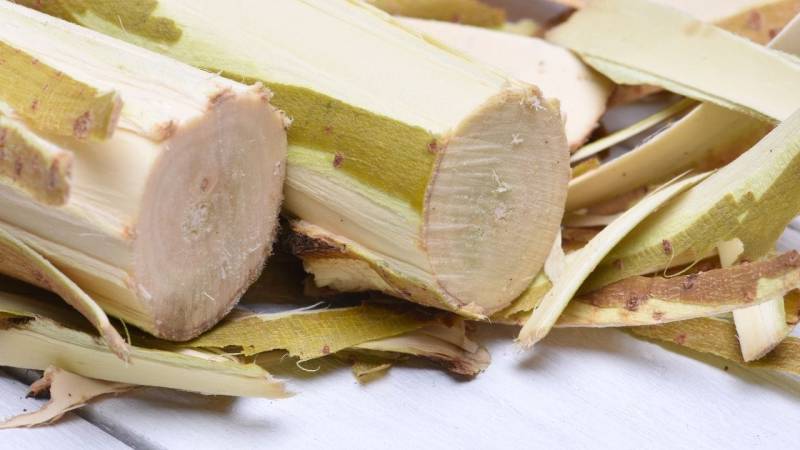
Which tree bark can you eat?
Pine trees: These evergreen conifers are most commonly associated with the consumption of inner bark. American Native tribes used to consume the inner bark of pine trees and other trees as an important part of their diet. You can easily identify pine trees by their needles and cones.
Birch trees: These thinly leaved deciduous trees, found in temperate climates, are particularly tasty. Their outer bark is light, thin, and papery. Birch bark is usually sweeter than other inner barks.
Linden trees: The inner layer of the bark is edible and has a sweet taste. Scrape it off with a knife. I find the leaves to be distinctive: they are large, heart-shaped, and have a roughly serrated edge.
Elm trees: This tree has an inner bark layer that is typically used in medicine to treat ailments. It is also edible.
Willow trees: The inner bark of the willow tree is also edible and contains a natural painkiller. Willow bark contains the compound salicin, which has pain-relieving properties similar to aspirin. However, willow bark is somewhat bitter.
To learn how to recognize birch, linden, and willow trees, check out my article on trees every survivalist should know about.
Trees with inedible or poisonous bark
Wild cherry trees: All parts of the tree are poisonous except for the fruit, but only when it is ripe. The bark, seeds, and leaves all contain cyanogenic glycosides. You can recognize the cherry tree by its white flowers and red fruits.
Yew trees: Yew trees grow in forests and gardens of Central and Southern Europe. They prefer moist, stony limestone soil and are an evergreen conifer. Everything on the yew tree is poisonous except for the red seed coat. The substance taxine is toxic to humans and can be deadly. You can recognize the yew tree by its thin scaly bark and distinctive red berries as well as thin, green, and shiny needles.
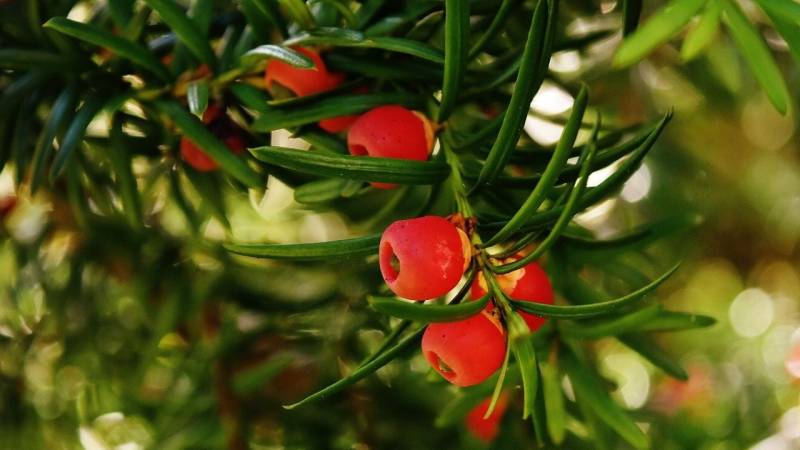
Eucalyptus trees: OK, these trees are not really known in Germany, but noteworthy. There are over 700 species of eucalyptus trees that occur all over the world where it doesn't get too cold in winter. Eucalyptus trees have peeling bark and range from red to rainbow-colored, and are easily recognizable by their scent.
How to harvest tree bark?
First, you hopefully have thoroughly identified the tree.
Then you work your way through the outer bark, the cambium layer, and down to the wood of the tree.
The cambium layer is light or cream-colored, sometimes very moist and rubbery. The layer is not very thick. After the cambium, you come across the wood of the tree.
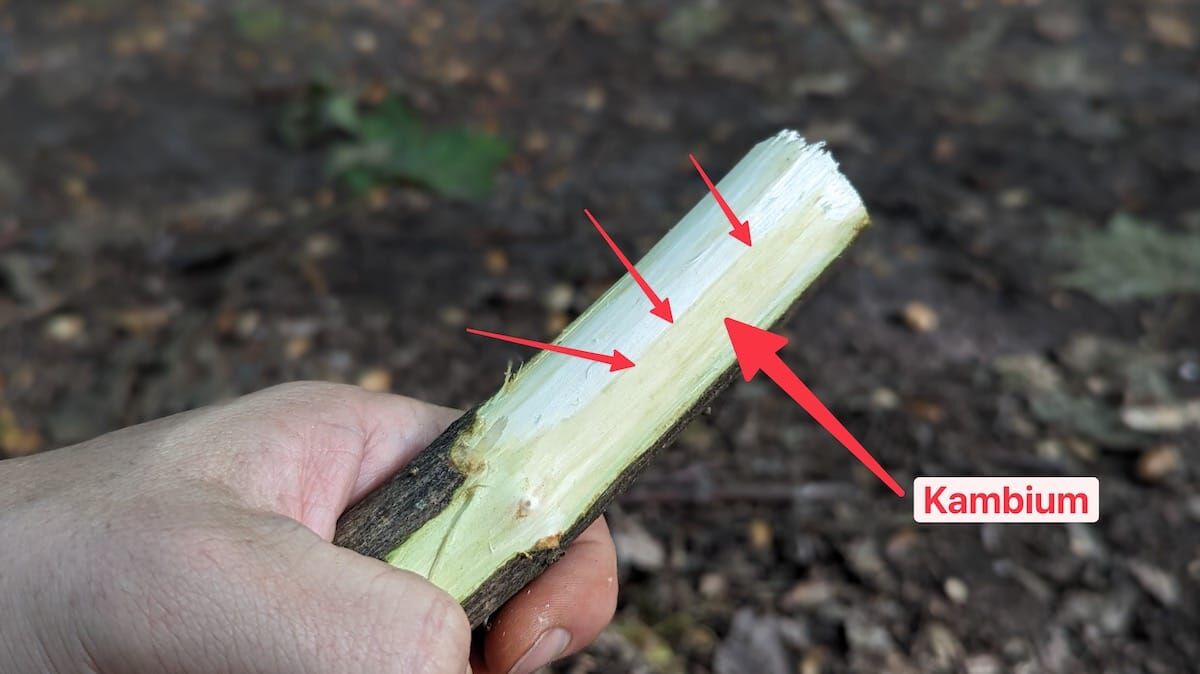
How to eat tree bark?
The most common ways to eat tree bark are:
- Cooking
- Raw
- Frying
- Drying and making flour
- crispy smoking
Cooking bark
If you are in a survival situation and have a pot and fire, then cook the bark. Cut the cambium into small strips and add them to the boiling water. In the end, you will get a kind of noodle – just not as soft. Cooking makes it easier to chew as strong fibers in the tissue are broken down.
Eating bark raw
It can be a bit tough to chew since you are likely chewing on strong fibers.
But sometimes it is the only option. Spit out the fibers and continue eating. Your stomach will thank you.
Frying bark
Grab a pan and fry the bark in oil or fat. Again, you want to make small strips like bacon. Fry the bark for a few minutes on each side. The taste and preparation remind me of potato chips.
Making bark flour
First, you have to dry the bark over the fire. Then, grind it up.
You probably won't have a solar panel-powered blender in the wilderness. So, grab a few stones and do it like our ancestors.
In the end, you will have fine bark flour and can bake your bread or make patties.
Bark bread, cookies, and patties have been a traditional food in Sweden and among Native American cultures for centuries.
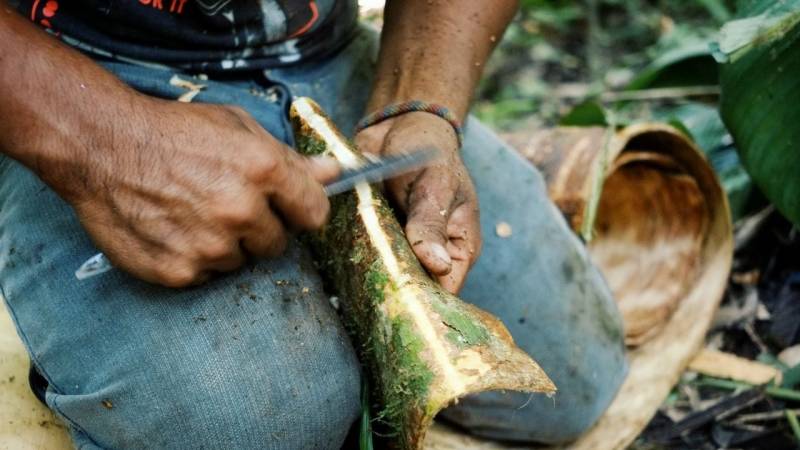
What does bark taste like?
Bark tastes different depending on the type of tree, just like vegetables taste different.
Birch bark has a slightly sweet taste. If you want to try the cambium, start with birch.
Many barks taste earthy, woody, and some even nutty, like elm bark. Some taste delicious, like cinnamon. Cinnamon is made from bark.
Try the bark and then write in the comments below how it tasted.
Treat the earth with the respect it deserves.
I often see pictures on Instagram of people experimenting with edible bark. Unfortunately, they often show pictures of injuries they have inflicted on living trees to obtain the bark. Trees that have been injured in this way are susceptible to attacks from disease and insects. The great nature lovers and survivalists I know have a great respect for nature. I never harm a living being unless I have to. This philosophy is a good sign of a true nature lover. Such people understand the importance of being careful with nature.
Summary
If you find yourself in a survival situation, the few calories from the inner bark can help you to survive.
If you have a knife and know how to use it, you don't need much energy to obtain this snack. It will give you enough energy to find more food and water.
Have you ever tried eating bark from a tree? Or are you planning to? Please let us know in the comments!

Sources for the guide
Bücher:
- Gerhard Buzek, Das grosse Buch der Überlebenstechniken, Seite 233, Nikol; 9. Edition (10. Januar 2007), ISBN: 9783937872483
- Mors Kochanski, Bushcraft: Outdoor Skills and Wilderness Survival, Seite 199, LONE PINE PUB; 003 Edition (25. Februar 2016), ISBN: 9781772130072
- Creek Stewart, Survival Basics: 365 Überlebenstechniken für den Ernstfall, Seite 134, Unimedica ein Imprint der Narayana Verlag; 1. Edition (27. April 2018), ISBN: 9783946566915
Wissenschaftliche Ausarbeitungen:
- Zackrisson, O.; Östlund, L.; Korhonen, O.; Bergman, I. (200), "The ancient use of Pinus sylvestris L. (scots pine) inner bark by Sami people in northern Sweden, related to cultural and ecological factors = Ancienne usage d'écorce de Pinus sylvestris L. (Pin écossais) par les peuples Sami du nord de la Suède en relation avec les facteurs écologiques et culturels", Vegetation History and Archaeobotany, 9 (2): 99–109, doi:10.1007/bf01300060, S2CID 129174312: https://link.springer.com/article/10.1007/BF01300060
Websites:
- https://sv.wikipedia.org/wiki/Barkbr%C3%B6d
- https://en.wikipedia.org/wiki/Bark_(botany)
- https://www.outdoorlife.com/blogs/survivalist/2011/11/survival-foods-can-you-really-eat-tree-bark/
- http://survivaltopics.com/edible-pine-bark/
- https://www.motherearthnews.com/real-food/eating-bark-how-to-harvest-and-prepare-edible-bark-zbcz1703/
- http://survivaltopics.com/edible-pine-bark/
- https://www.voanews.com/a/ape-ancient-man-bark-twigs/1349092.html
- https://www.nationalgeographic.com/pages/article/120627-sediba-teeth-fossils-bark-human-evolution-max-planck-nature

Author of the guide
Martin Gebhardt
Hey, I'm Martin. On my blog, you will learn the basics and numerous details about living in the wild. I think survival, bushcraft and the good life in nature are the keys to happiness. Find me here on Instagram or on YouTube. You can find more about my mission on the About Me page.
Was this guide helpful?
159 people found this guide helpful.
4.98 out of 5 points (160 Ratings)
Comments (0)
This post may contain affiliate links. So if you click on the links and make a purchase, I will receive a small commission at no additional cost to you. Click here, to learn more about it.


